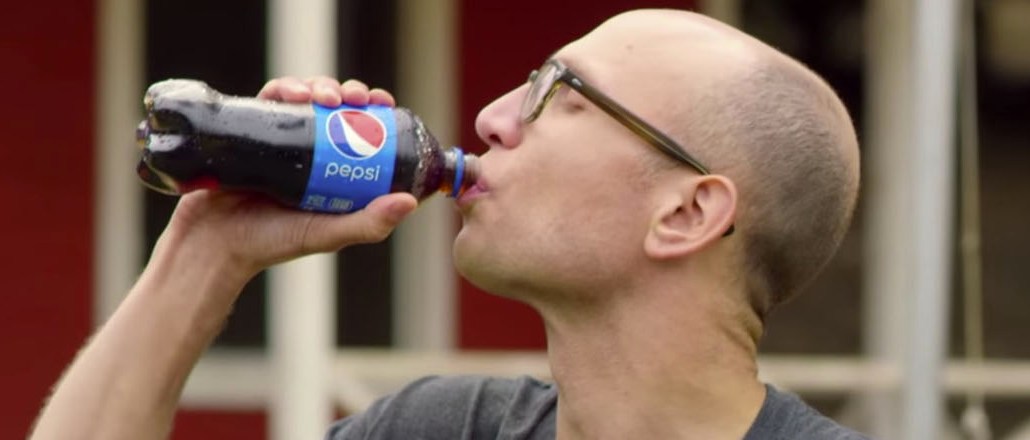

Pepsi is not waiting for halftime at the Super Bowl to put on a marketing show.
The brand is building up to the moment when Coldplay will take the field with a social media campaign splashed across every platform from its own website to Twitter to Facebook. Instead of just putting a commercial on YouTube ahead of time, like in years past, this year is all about the slow burn.
This is a new tack of big Super Bowl advertisers, which include Amazon and Budweiser and smaller ones like financial services startup SoFi. They’re trying to reintroduce surprise into their marketing by generating anticipation through social media.
Pepsi will still air a commercial during the game, one that focuses on its history in the music industry, and it is a sponsor of the Halftime Show. On top of these traditional efforts, however, it is the first brand to sponsor a Twitter Promoted Moment for the game, and it will be a part of the first Super Bowl Live Story on Snapchat, according to Linda Lagos, digital marketing director at Pepsi.
“We have a robust social and digital strategy,” Lagos said. “We are part of pop culture and need to be in a few different places.”
Pepsi is being coy about all of its creative ideas around the game. On Friday, it launched a Twitter “hash-flag,” which is a custom emoji that appears when the hashtag “Pepsi halftime” is used. It’s been sharing videos on social media — mini, comedic episodes leading up to its halftime show. It’ll have something on Snapchat on game day that will be “prominent,” Lagos said.
Who’s Jean Claude Felipe LeCrow? Tune into Camp Halftime Ep.3 on https://t.co/cVSxRliLp9 to find out. #PepsiHalftimehttps://t.co/964AlNaBKl
— Pepsi™ (@pepsi) January 27, 2016
The National Football League is sharing fan videos from the game in a Snapchat Live Story, the first for the Super Bowl, and it will feature commercials from Amazon, Budweiser and Marriott, as well as Pepsi. Pepsi said the Snapchat spot will be tied to its game commercial and the music history theme. Twitter remains a top platform, despite more competition than ever from Facebook, Instagram, Snapchat, and Youtube. “Twitter still feels like a very special channel; it’s very much where people go to get scoops and news,” Lagos said. Facebook has become more important to the marketing roll-out, too, with its focus on video, multimedia mobile ads and Instagram.
Be patient.
Posted by Mountain Dew on Friday, January 22, 2016
Mountain Dew, a Pepsi-affiliated brand, is holding back revealing its commercial for the game but teasing it on Facebook. The brand will release three cryptic videos on the social network, then reveal the final, full installment during the game.
There’s been a clear shift in mentality around Super Bowl marketing throughout the years. Pre-Internet, the commercials were their own event on game day, and with the rise of YouTube, brands started posting their spots earlier and earlier. Now, brands use social media to build to a game-day reveal — and on the day of, attempt a social Super Bowl surprise.
The financial services company SoFi is essentially launching its entire brand around the Super Bowl, a big commitment in ad spending for the startup. “We’ve done a lot of research,” said Meg Ciarallo, SoFi’s head of brand. “We’re not considering it a Super Bowl campaign. We’re launching a big brand campaign that started this month.”
SoFi has already run a Promoted Trend on Twitter, mobile masthead on YouTube and ads on Facebook and Instagram. SoFi hopes this approach will make its Super Bowl ad all the more memorable.
“Now, when people see the ad, there will be more context, higher impact of the messaging, and higher recall and conversion,” Ciarallo said.
More in Media

Media Briefing: Publishers who bet on events and franchises this year are reaping the rewards
Tentpole events and franchises are helping publishers lock in advertising revenue.

With Firefly Image 3, Adobe aims to integrate more AI tools for various apps
New tools let people make images in seconds, create image backgrounds, replacing parts of an image and use reference images to create with AI.

Publishers revamp their newsletter offerings to engage audiences amid threat of AI and declining referral traffic
Publishers like Axios, Eater, the Guardian, theSkimm and Snopes are either growing or revamping their newsletter offerings to engage audiences as a wave of generative AI advancements increases the need for original content and referral traffic declines push publishers to find alternative ways to reach readers.





